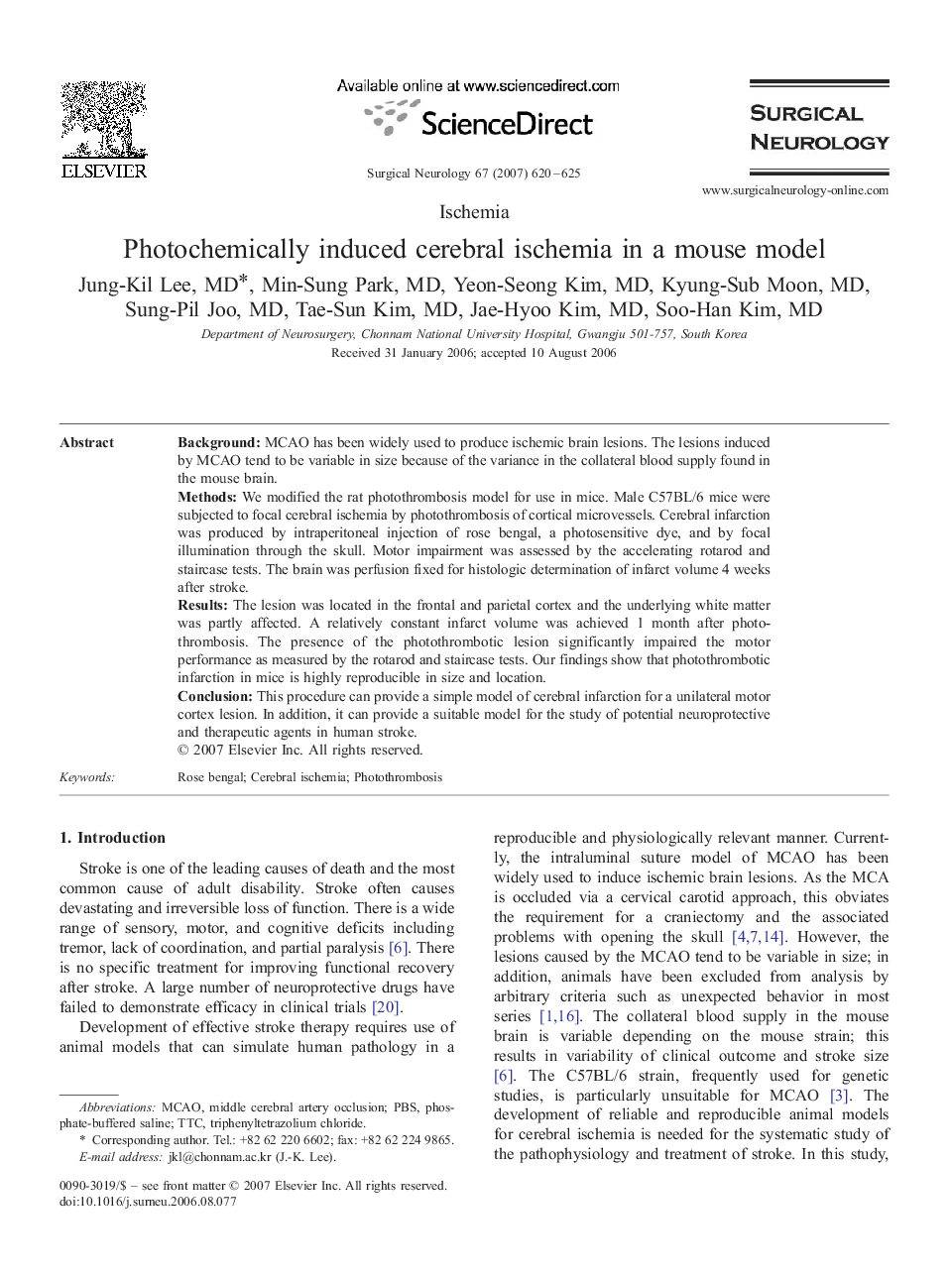| Article ID | Journal | Published Year | Pages | File Type |
|---|---|---|---|---|
| 3093564 | Surgical Neurology | 2007 | 6 Pages |
BackgroundMCAO has been widely used to produce ischemic brain lesions. The lesions induced by MCAO tend to be variable in size because of the variance in the collateral blood supply found in the mouse brain.MethodsWe modified the rat photothrombosis model for use in mice. Male C57BL/6 mice were subjected to focal cerebral ischemia by photothrombosis of cortical microvessels. Cerebral infarction was produced by intraperitoneal injection of rose bengal, a photosensitive dye, and by focal illumination through the skull. Motor impairment was assessed by the accelerating rotarod and staircase tests. The brain was perfusion fixed for histologic determination of infarct volume 4 weeks after stroke.ResultsThe lesion was located in the frontal and parietal cortex and the underlying white matter was partly affected. A relatively constant infarct volume was achieved 1 month after photothrombosis. The presence of the photothrombotic lesion significantly impaired the motor performance as measured by the rotarod and staircase tests. Our findings show that photothrombotic infarction in mice is highly reproducible in size and location.ConclusionThis procedure can provide a simple model of cerebral infarction for a unilateral motor cortex lesion. In addition, it can provide a suitable model for the study of potential neuroprotective and therapeutic agents in human stroke.
